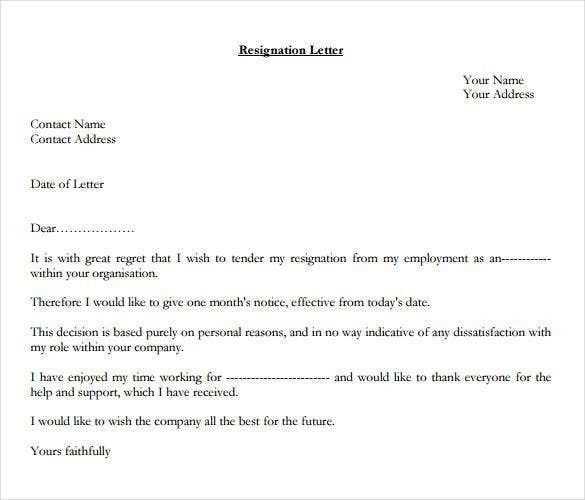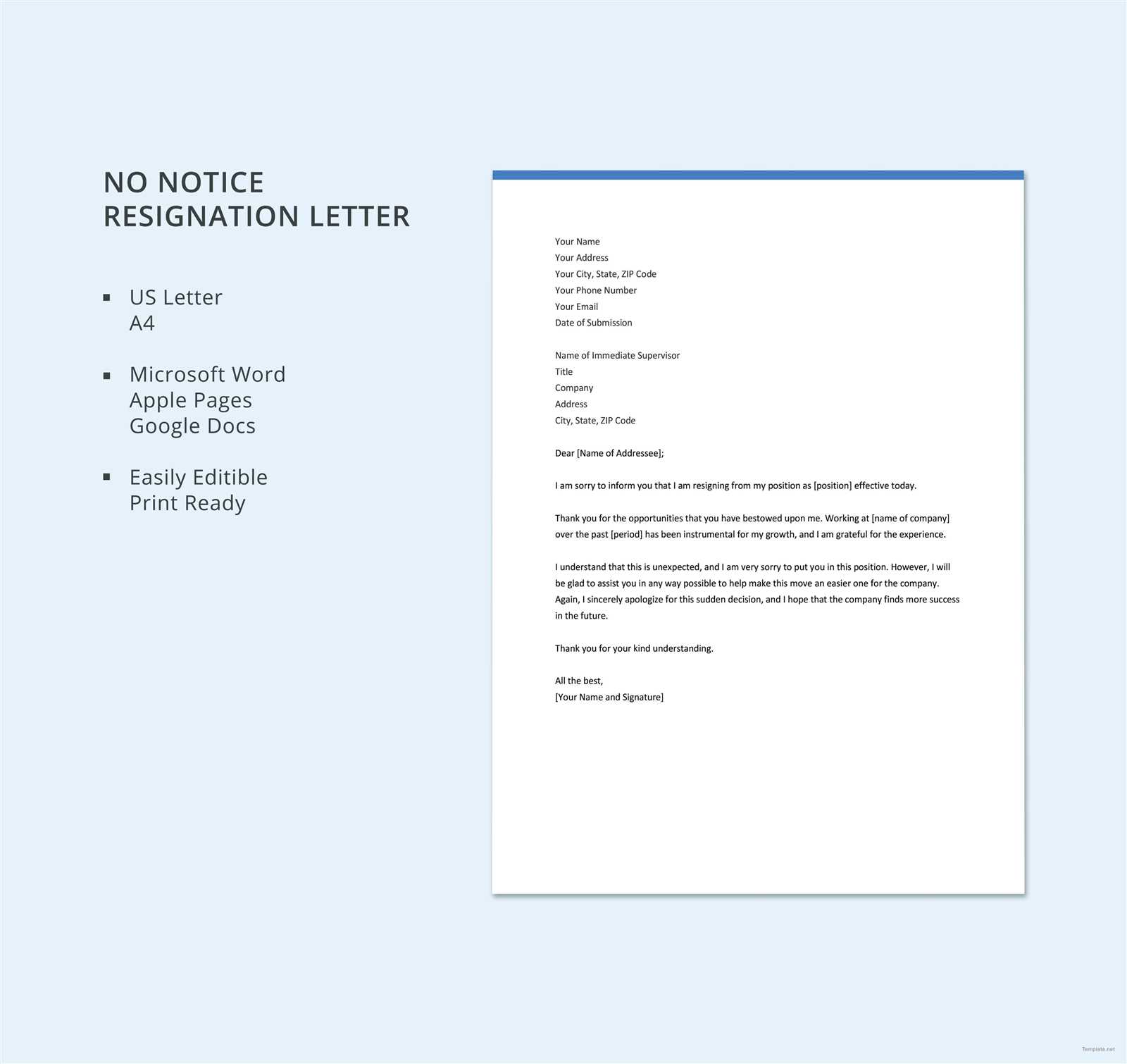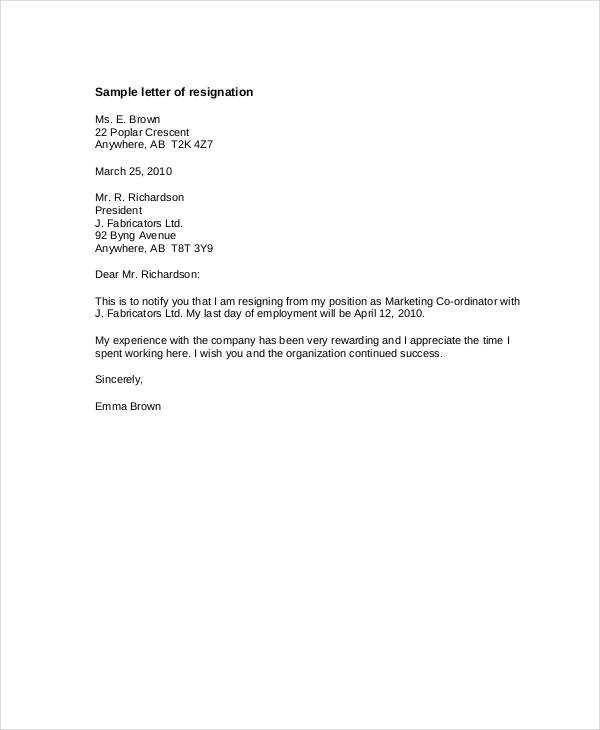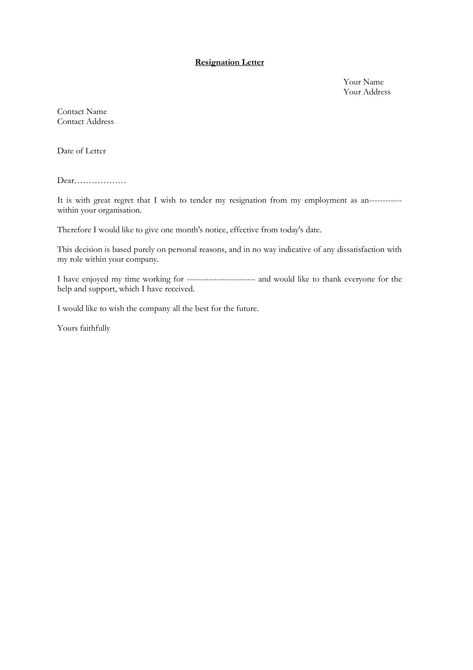1 Month Notice Sample Resignation Letter Template

When it comes time to leave your current job, providing a clear and respectful announcement is crucial. Communicating your decision properly ensures a smooth transition and maintains your professional reputation.
Writing a formal communication about your departure requires careful consideration. It’s important to structure your message effectively, expressing gratitude while being concise. A well-crafted statement helps leave a positive impression, even as you move on to new opportunities.
Mastering this skill can make the process easier, preventing misunderstandings and ensuring a respectful conclusion to your current role. Here’s how you can approach this task with confidence and clarity.
Understanding a 1 Month Notice Period
When stepping away from your job, providing ample time for your employer to adjust is an important step in ensuring a smooth transition. This practice helps both parties prepare for changes without causing disruptions in workflow or responsibilities.
Typically, a reasonable amount of time is expected to allow the company to find a replacement and for you to finish any pending tasks. This period reflects professionalism, as it gives your employer enough time to manage your departure without leaving them in a difficult position.
In some cases, this timeline may be required by company policies or written agreements. Understanding its significance can help you navigate this phase with respect and clarity, contributing to a positive final impression in your career journey.
Importance of Giving Proper Notice

Providing adequate time before leaving your role is a professional gesture that reflects respect for the organization and its needs. A thoughtful exit ensures a seamless transition, minimizes any disruptions, and maintains good relationships for future opportunities.
Failing to offer sufficient time before departing can create difficulties for your employer, from scrambling to find a replacement to having unfinished tasks or responsibilities left behind. Being mindful of this aspect helps both you and your employer manage the change with ease.
| Benefits of Giving Proper Time | Consequences of Leaving Abruptly |
|---|---|
| Gives the company time to adjust and plan | Leaves the employer struggling to fill the position quickly |
| Shows professionalism and respect | May damage your professional reputation |
| Helps maintain positive relationships | Can cause disruptions in work processes |
How to Write a Resignation Letter

Crafting a formal message about your decision to leave a position requires clarity and professionalism. The goal is to communicate your departure in a way that leaves a positive impression while ensuring that all necessary details are included.
Start with a clear and direct statement indicating your intention to step down from your role. Follow this by expressing gratitude for the opportunities provided during your tenure. It’s essential to maintain a respectful tone throughout, as this ensures a smooth conclusion to your time with the company.
Lastly, be sure to offer assistance during the transition period and leave an open line for future contact. This shows that you are committed to a seamless handover and remain open to professional connections down the line.
Key Elements of a Resignation Letter
When preparing to inform your employer of your decision to leave, it’s important to include certain essential components. These elements ensure your message is complete, clear, and professional, leaving no room for confusion.
Begin with a formal opening, addressing the appropriate individual. Clearly state your intention to step down, followed by the specific date your departure will take effect. Providing a reason for your decision is optional but can offer helpful context.
Additionally, express your gratitude for the experience and opportunities you had during your time with the company. Lastly, include a statement about your willingness to assist during the transition period, demonstrating your commitment to a smooth handover.
Professional Tone in Your Letter
Maintaining a respectful and professional tone throughout your communication is essential for leaving a positive impression. This approach reflects well on your character and ensures that your message is received with the appropriate level of professionalism.
To achieve this, consider the following points:
- Use formal language that aligns with workplace etiquette.
- Avoid overly casual expressions or slang that may seem unprofessional.
- Be concise and to the point while expressing appreciation for your time at the company.
By keeping the tone respectful and professional, you help to ensure that your departure is seen as a well-considered decision, leaving no room for misunderstandings or negative impressions.
Common Mistakes to Avoid in Resignation Letters

When informing your employer of your decision to leave, it’s essential to avoid certain pitfalls that could reflect poorly on your professionalism. By being aware of common errors, you can ensure that your message is well-received and leaves a positive impression.
Here are some mistakes to avoid:
- Being vague about your departure date or intentions.
- Including negative comments about the company, colleagues, or work environment.
- Failing to express gratitude for the opportunities you’ve had during your time at the organization.
- Making your communication overly long or unnecessarily detailed.
- Not offering assistance during the transition period.
Avoiding these mistakes helps you maintain professionalism and ensures that your departure is handled in the best possible way.